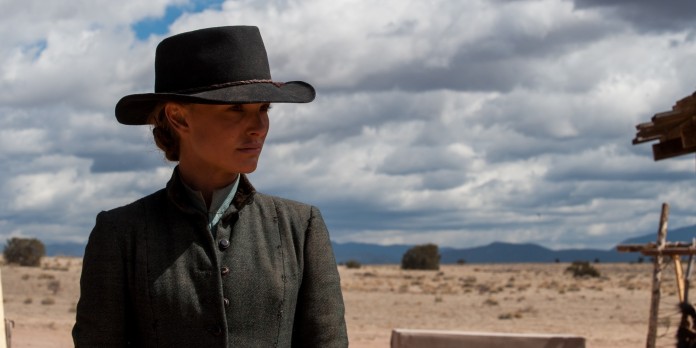Chances are, you’ll have heard all about Jane Got a Gun – and not necessarily for the right reasons. With We Need to Talk About Kevin director Lynne Ramsay set to helm the project, with Michael Fassbender in one of the leading roles, and Joel Edgerton as the protagonist’s adversary. Fassbender had to leave the film due to scheduling conflicts, so Edgerton was recast in his now vacant role, and Jude Law was brought in. Not long after, Ramsay walked off the shoot, and Law followed. Bradley Cooper was then cast as the film’s primary villain – but he then left for the same reasons Fassbender did. It was nothing short of a disaster.
But the studio persevered, and with Natalie Portman in the title role, as the one constant in this ever-changing endeavour, it enticed in Gavin O’Connor, and following a rewrite of the script – and the casting of Ewan McGregor (the fourth actor to play John Bishop) – the film was ready to go again, and now, after much time has passed, it’s set for its UK release – and it’s not nearly as bad as you may have envisaged it to be. The one criticism, and a certain casualty of the ever-changing vision for this movie, is the lack of a palpable tone and identity, but thankfully there’s a certain allure that ensures the viewer remains engaged.
Jane has had to rebuild her life, following the turmoil and distress caused by John Bishop and his outlaw gang, who terrorised her family. Now with a new husband (Noah Emmerich) and young child, she is troubled when her partner returns home with several gun shot wounds, claiming that a storm is a-coming. Knowing he is not in a fit state to help protect their home – and child – she pleads with a former lover, Dan Frost (Edgerton) to lend a hand. Reluctant at first, he realises it is his duty to assist, as the pair wait patiently for the criminals to approach the abode – while she fills in her ex-partner on the tumultuous few years she’s encountered, hoping for his forgiveness after their calamitous break up.
The film thrives from its simplistic narrative and set-up, similar, in that regard, to Slow West – which builds up pensively to the grand shoot-up finale where everything comes together. However when dealing with a story that revels in such minimalism, you’re extra reliant on a pulsating, absorbing screenplay, with quick-witted dialogue to make up for the lack of action – and this feature is severely lacking in that very area.
Jane Got a Gun is needlessly complex in parts too, particularly in how Jane is haunted by memories of her past – a perfectly acceptable addition, but one that is clumsily edited into proceedings, and devalues the narrative as we weave between the past and the present with badly implemented flashbacks. Nonetheless, there is a charm to this endeavour, as the persistent, brutal sound of the gunshots plays against the serenity of the landscape, and the artistic nature of O’Connor’s presentation.
But the director may have been wise to have asked Edgerton to return to the role of John Bishop, for McGregor has been miscast in the role of the nefarious, volatile antagonist. You need to fear him and McGregor is just too likeable for that to be the case. Edgerton excels as Dan Frost, but perhaps a reversal would’ve been beneficial, given he’s got more intensity about his demeanour, and a more believable darker side.









